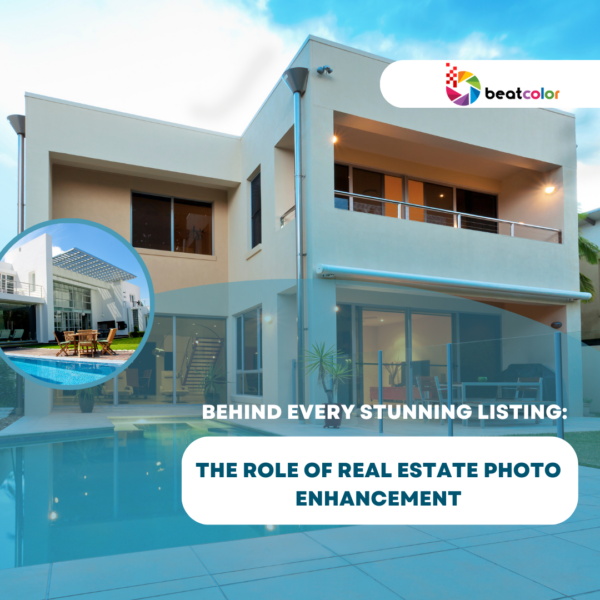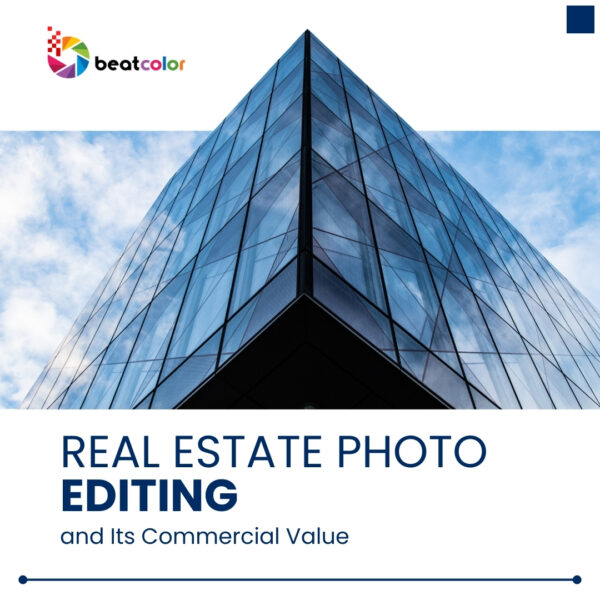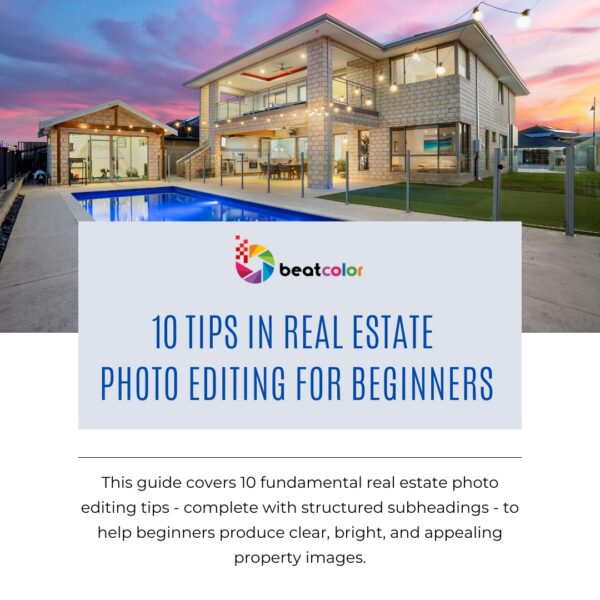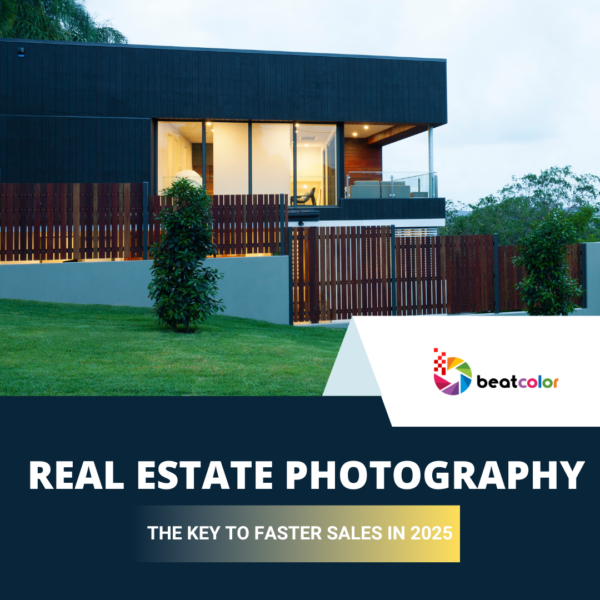Real Estate Virtual Staging: Transforming Property Marketing
In today’s competitive real estate market, making a strong first impression is crucial. Real estate virtual staging is a powerful tool that enhances property listings, helping to attract more potential buyers. This technology digitally furnishes and decorates empty or poorly furnished homes, making them look inviting and stylish. Virtual staging helps buyers imagine living in the space, making a significant impression when selling a property.
This article will explain how virtual staging can help you sell your property faster. We’ll cover its benefits, costs, and the step-by-step process involved.
1. Understanding Virtual Staging in Real Estate
Real estate virtual staging is a technique that digitally furnishes and decorates photos of a property using computer software. Unlike traditional staging, there is no need to move physical furniture into a home. Instead, we digitally add furniture and decor to the images of the property.
This method is ideal for empty homes, new constructions, or spaces needing a design update. A cost-effective way to make any property look its best.
Virtual staging allows you to create a vision of what a space could be, making a cold, empty room look warm and welcoming. Buyers struggle to picture how to use an empty space. Virtual staging helps by showing them the potential.
2. Benefits of Virtual Staging Services

a. Enhanced Visual Appeal
Virtual staging significantly enhances the visual appeal of property photos. A well-staged home is more likely to grab the attention of potential buyers.
Virtually staged photos highlight a space’s best features, making it look more attractive. This is especially beneficial for properties that may otherwise appear bland or uninviting in empty photos. When buyers see a beautifully staged home, they can better imagine living in it, leading to more interest and offers.
b. Cost-Effective Solution
Another major advantage of virtual staging is its cost-effectiveness compared to traditional staging. Traditional staging involves renting furniture, hiring movers, and sometimes paying for storage. Virtual staging eliminates these expenses.
Digital staging is a cost-effective option for sellers to showcase their property. Digital staging is a cheaper way for sellers to show off their property. More affordable than physical staging and still makes the property look good. Sellers can save money while still presenting their property effectively.
c. Quick Turnaround Time
In the property market, timing is crucial. Virtual staging offers a quick turnaround time, with staged photos often delivered within 24 hours. This speed allows you to get your listing up quickly, which is crucial in a fast-paced market. Listing your property with attractive photos will allow potential buyers to start viewing it sooner.
3. The Process of Real Estate Virtual Staging
Step 1: Photo Submission
The first step in the virtual staging process is submitting high-quality photos of the property. Clear, well-lit images are essential for achieving the best results. The photos should show the property from different angles so the virtual stager can see each room well.
Read more: How to create account and request task on BeatColor system?
Step 2: Design Selection
Once you submit the photos, you can choose from various design styles that best suit the property and target market. Virtual staging services typically offer a wide range of options, from modern to traditional. Selecting the right style is important to ensure that the staged photos appeal to your target buyers.
Step 3: Digital Staging
In this step, the virtual stager uses specialized software to add virtual furniture and decor to the photos. This process involves careful placement and attention to detail to ensure that the final images look realistic and inviting. The goal is to create a space that potential buyers can easily imagine themselves living in.
Step 4: Review and Revisions
After the initial staging is complete, you can review the photos and request any changes. This ensures the final images meet your expectations and attract potential buyers. The ability to make revisions allows for personalization based on your preferences.
Read more: How to enable web to push notifications ?
Step 5: Final Delivery
Once the staging is finalized and any revisions are made, the high-quality images are delivered to you. You can add these photos to your property listing to create a good first impression on potential buyers.
Read more: How to download done files ?
4. Why Choose Virtual Staging?

a. Sell Property Faster
Homes with virtually staged photos tend to sell quicker than those with empty or poorly furnished photos. Staged homes capture buyers’ attention and help them envision the space as their own, making them more likely to make an offer.
b. Professional Interior Design
Virtual staging provides access to professional interior design expertise without the high costs associated with hiring an interior designer. This means you can achieve a high-end look that appeals to discerning buyers. A well-designed space can significantly increase a property’s appeal and market value.
c. Flexibility and Personalization
Virtual staging offers flexibility and personalization that traditional staging cannot match. You have the freedom to experiment with different styles and layouts until you find the perfect look for your property. This flexibility allows you to tailor the staging to appeal to a broader group of potential buyers.
d. Improved Online Presence
In today’s digital age, most buyers begin their property search online. This makes having high-quality, visually appealing photos in your listing more important than ever. Virtually staged photos stand out in online listings, increasing the likelihood of attracting more views and inquiries. The better your online presence, the more likely you are to generate interest and get offers on your property.
5. Virtual Staging vs. Traditional Staging
While both virtual and traditional staging have their merits, virtual staging offers several distinct advantages:
a. Cost and Convenience
Virtual staging is significantly more cost-effective and convenient than traditional staging. No need for physical furniture or moving services means less hassle and expense for the seller.
b. Speed
The quick turnaround time of virtual staging is another major advantage. Virtual staging can be completed in as little as 24 hours, while traditional staging can take days or even weeks. This speed allows sellers to list their properties faster, which is crucial in a competitive market.
c. No Physical Limitations
Virtual staging does not have limitations imposed by physical space. You can create any design style without worrying about logistics. This flexibility allows for greater creativity and personalization, making it easier to showcase the property in its best light.
Conclusion
Real estate virtual staging is a revolution in the property market. It offers a cost-effective, efficient, and visually appealing solution to showcase properties in their best light. Virtual staging enhances property listings, attracting more buyers and helping to sell properties faster. Virtual staging is a useful tool for real estate agents and homeowners to improve property marketing efforts.
Boost your real estate strategy by using virtual staging services, virtual furniture, and staged photos. This approach will help you sell your property faster and stand out from the competition. Embrace real estate virtual staging and see the difference it can make in your listings.
Read more:
Using Virtual Staging in Real Estate Ethically – What Should Be Noted?
Commercial Photo Editing Services Trends and Innovations 2024
Transform Your Real Estate Strategy: Top 5 Virtual Staging AI Tools in 2024











